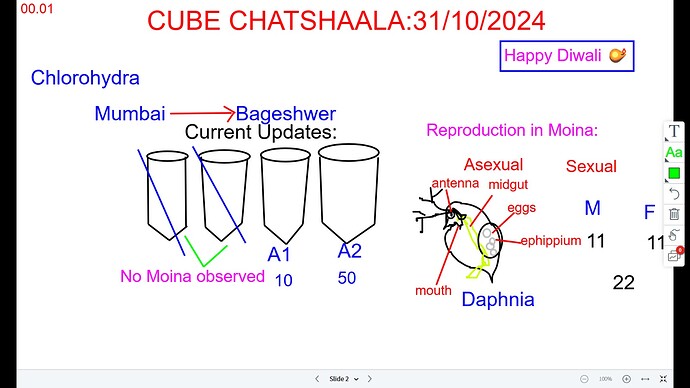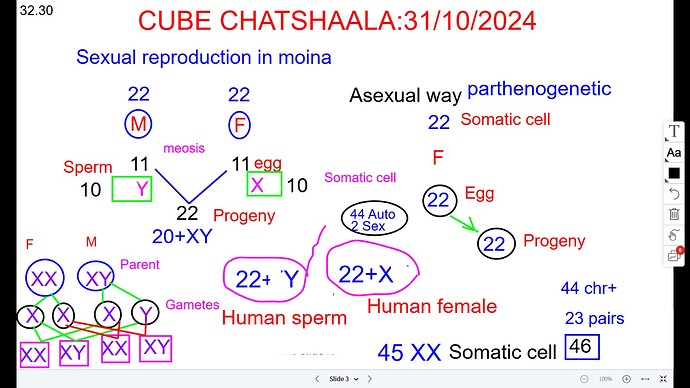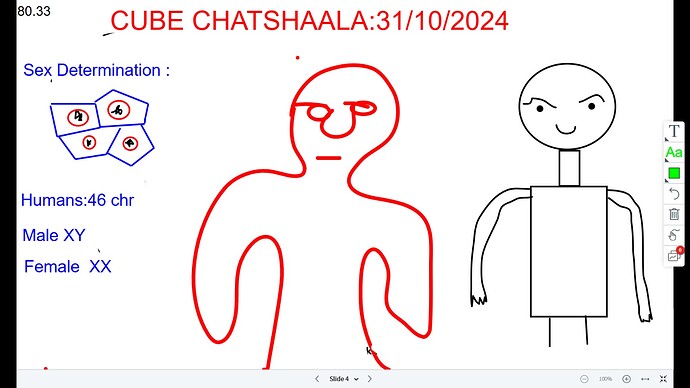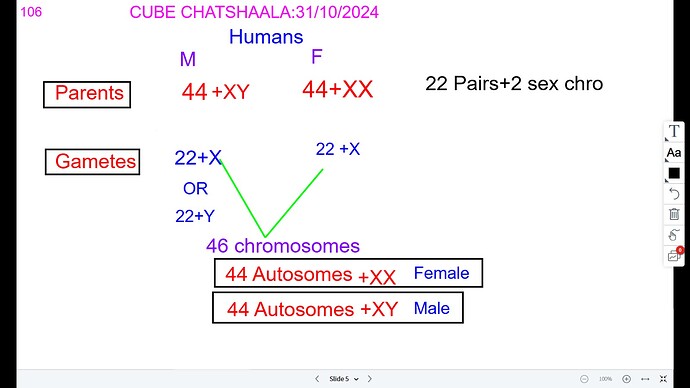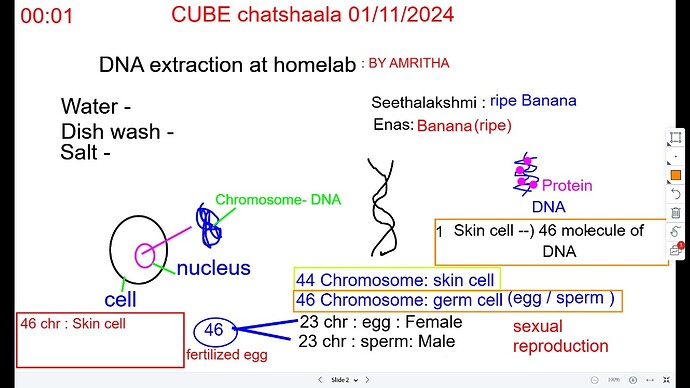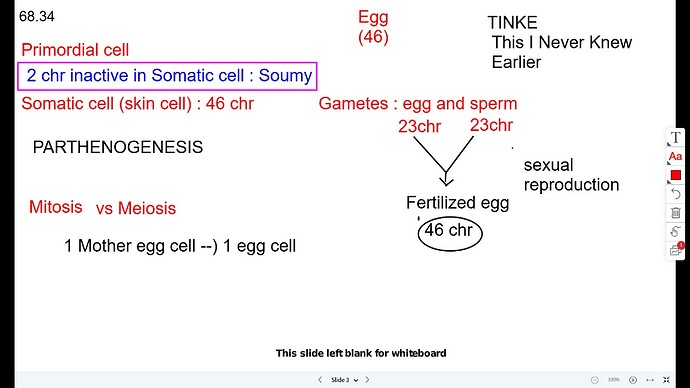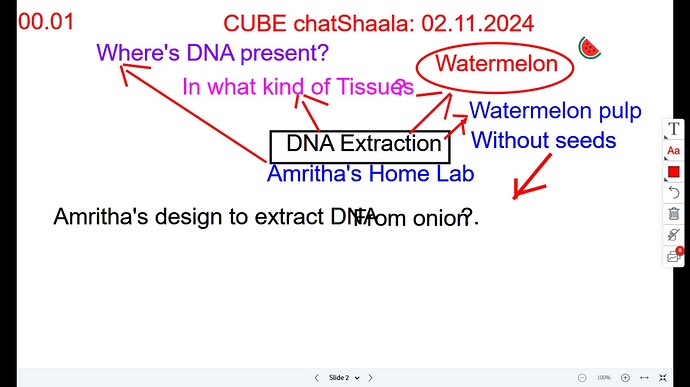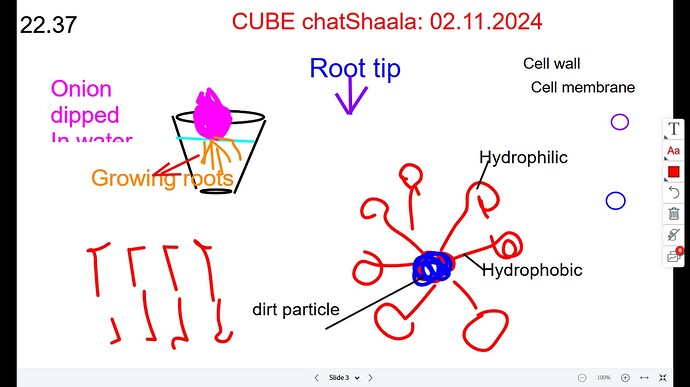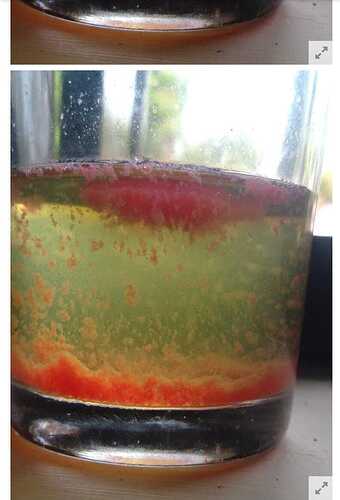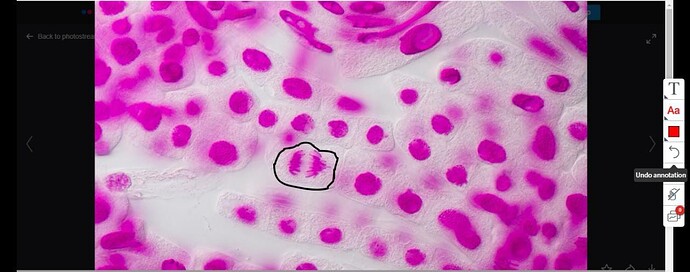One major question addressed was the reproduction of Moina under unfavorable conditions, particularly because the Moina received by Kiran from Sakshi was not present in the Vilas.
We discussed the possibility of asexual reproduction through parthenogenesis.
1)How does Moina maintain a 2N condition in progeny through parthenogenesis?
2)Will progeny formed from female parents be female only?
3)How does sex determination occur?
4)How do chromosomes in gametes differ from those in parents?
Reference shared:
[31/10, 9:49 pm] Theertha: Freshwater zooplankton Daphnia adopts two distinct ways of reproduction: asexual (parthenogenetic) reproduction for rapidly reproducing many offspring in favorable environment and sexual reproduction for producing resting eggs as seed bank to survive in harsh environments. https://www.sciencedirect.com/science/article/abs/pii/S0269749119361706#:~:text=Freshwater%20zooplankton%20Daphnia%20adopts%20two,to%20survive%20in%20harsh%20environments.
[31/10, 9:50 pm] Theertha: Daphnia can produce resting eggs via sexual reproduction when environmental conditions are not suitable for them, such as colder weather (Stross, 1966), shorter daytime (Alekseev and Lampert, 2001; Stross and Hill, 1965), lack of food (Alekseev and Lampert, 2001; LaMontagne and McCauley, 2001), and crowded population (Kleiven et al., 1992). Moreover, some kinds of toxic chemicals used more frequently in agriculture and other fields, such as pesticides and drugs (Buser et al., 2012), also can cause Daphnia to reproduce sexually and produce resting eggs. The resting eggs protected by a stable and dark shell called ephippium will continue developing after several periods of dormant stages, and thus survive in the adverse environments and maintain population continuity (Davison, 1969). https://www.sciencedirect.com/science/article/abs/pii/S0269749119361706#:~:text=Freshwater%20zooplankton%20Daphnia%20adopts%20two,to%20survive%20in%20harsh%20environments.
[31/10, 9:50 pm] Theertha: From a study of over 1000 mothers, the female chromosome number appears to be 2N = 22; N = 11. https://onlinelibrary.wiley.com/doi/abs/10.1002/jmor.1050480106
Group photograph of participants taken at 9.40pm,31/10/2024
DNA Extraction Discussion:
We also discussed DNA extraction in Amritha’s home lab, focusing on the extraction method . To extract DNA, we need to break the cell wall, cell membranes, and nuclear membrane, followed by the precipitation of DNA.
We discussed various opinions from Cubists regarding the number of chromosomes in humans.
Soumy said that human skin cells have 44 chromosomes, with the two sex chromosomes being inactive in somatic cells, whereas human germ cells (eggs and sperm) contain 46 chromosomes.But , Enas disagreed, stating that somatic cells have 46 chromosomes and germ cells have 23 chromosomes.
Major questions addressed:
1)How do dogs and cats produce 5-6 babies at a time?
2)Where is DNA located in the cell?
[01/11, 9:38 pm] Subhashree: Thank u @Enas CUBE @~Batul Pipewala ma’am @Chithra Ma’am ma’am !! I never thought in that perspective! That one big dna molecule is wrapped around one chromosome !
Reference shared:
[01/11, 9:34 pm] Enas CUBE: Meiosis is a type of cell division in sexually reproducing organisms that reduces the number of chromosomes in gametes (the sex cells, or egg and sperm). In humans, body (or somatic) cells are diploid, containing two sets of chromosomes (one from each parent). Meiosis.
[01/11, 9:34 pm] Enas CUBE: The X chromosome contains 867 identified genes; most of these genes are responsible for the development of tissues like bone, neural, blood, hepatic, renal, retina, ears, ear, cardiac, skin, and teeth. There are at least 533 disorders due to the involvement of the genes on the X chromosome.
So, male (44+XY)or female (44+XX) both contains X chromosome. And it will take part in life process. So it must be active in somatic cells also.
[01/11, 9:35 pm] Enas CUBE: The diploid human genome is thus composed of 46 DNA molecules of 24 distinct types. Introduction - Mapping and Sequencing the Human Genome - NCBI Bookshelf.
Continued Discussion:
The main focus of our discussion was the process of extracting DNA and how we can break the cell wall and cell membranes of onion cells to extract the DNA. We made a comparison between using hand wash during COVID times and the removal of dirt using detergent.
Just as detergents can disrupt cell membranes, the sodium salt of fatty acids can interact through hydrophobic and hydrophilic part of lipid bilayer, leading to the formation of micelles that break down cell membranes.
Major questions addressed:
How can we break the cell wall?
Source: Online site
How does cell divides?
𝗥𝗲𝗳𝗲𝗿𝗲𝗻𝗰𝗲 𝘁𝗵𝗮𝘁 𝘀𝗵𝗮𝗿𝗲𝗱 𝘆𝗲𝘀𝘁𝗲𝗿𝗱𝗮𝘆’𝘀 𝗰𝗵𝗮𝘁𝘀𝗵𝗮𝗮𝗹𝗮 𝗱𝗶𝘀𝗰𝘂𝘀𝘀𝗶𝗼𝗻 (𝟬𝟮/𝟭𝟭/𝟮𝟬𝟮𝟰)
![]() Mitosis in Onion Root tiphttps://www.photomacrography.net/forum/viewtopic.php?t=21030
Mitosis in Onion Root tiphttps://www.photomacrography.net/forum/viewtopic.php?t=21030
![]() DNA Extraction in Homelabs - #6 by Theertha
DNA Extraction in Homelabs - #6 by Theertha
![]()
Water has a partial negative charge from its oxygen atom and partial positive charges on its hydrogen atoms. This polarity allows water molecules to form strong hydrogen bonds with each other, between the negatively charged oxygen atom on one water molecule and the positively charged hydrogen atoms of another. Other molecules such as salts and sugars are able to dissolve in water because of its polarity as well. The charges at either end of the water molecule help break up the chemical structures of other molecules.
Oils, by contrast, are nonpolar, and as a result they’re not attracted to the polarity of water molecules. In fact, oils are hydrophobic,or “water fearing.” Instead of being attracted to water molecules, oil molecules are repelled by them. As a result, when you add oil to a cup of water the two don’t mix with each other. Because oil is less dense than water, it will always float on top of water, creating a surface layer of oil. You might have seen this on streets after a heavy rain—some water puddles will have a coating of oil floating on them. Mix It Up with Oil and Water | Scientific American
Group photographs of the participants:2/11/2024
